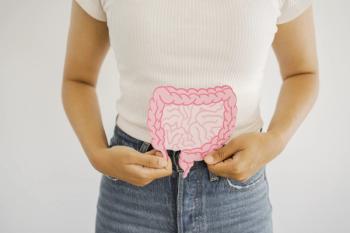
Will There Be an Immunotherapy Approval in Gastric Cancer?
Keytruda (pembrolizumab) showed promising signs of clinical activity for patients with advanced gastric or gastroesophageal junction (GEJ), according to updated findings from KEYNOTE-059 study that were presented at the 2017 American Society for Clinical Oncology (ASCO) Annual Meeting.
Keytruda (pembrolizumab) showed promising signs of clinical activity for patients with advanced gastric or gastroesophageal junction (GEJ), according to updated findings from KEYNOTE-059 study that were presented at the 2017 American Society for Clinical Oncology (ASCO) Annual Meeting.
The objective response rate (ORR) with Keytruda was 11.6 percent. In those who specifically received two prior lines of therapy, the ORR was 16.4 percent. The median progression-free survival (PFS) was two months and the median overall survival (OS) was 5.6 months, with a 12-month OS rate of 23.4 percent.
The latest update included findings from patients with microsatellite instability-high (MSI-H) tumors, which was 4 percent of enrolled patients (seven patients). In this group, the ORR with Keytruda was 57.1 percent and the CR rate was 14.3 percent. The disease control rate (DCR) was 71.4 percent. In those with non-MSI-H tumors (167 patients), the ORR was 9 percent and the CR rate was 2.4 percent. The disease control rate was 22.2 percent.
A supplemental biologics license application based on data from the KEYNOTE-059 study was accepted by the FDA for a priority review in May 2017 for Keytruda as a treatment for patients following at least 2 courses of therapy for recurrent or advanced gastric or GEJ adenocarcinoma. The agency is expected to announce a decision by Sept. 22, 2017.
"Pembrolizumab represents a potential treatment option for patients with gastric/GEJ cancer who have progression after at least two prior lines of therapy," said lead investigator Charles S. Fuchs, M.D., M.P.H., director of Yale Cancer Center and Physician-in-Chief of Smilow Cancer Hospital. "Ongoing randomized clinical trials are now assessing pembrolizumab in earlier lines of therapy and in combination with chemotherapy regimens for patients with advanced gastric and GEJ cancer."
In the KEYNOTE-059 trial, 259 patients received Keytruda at a flat 200 mg dose every three weeks. The median age of patients was 62 years and 76.4 percent were male. The ECOG performance status for patients was primarily 0 (41.3 percent) and 1 (58.3 percent). Overall, 51.7 percent of patients had received two prior lines of therapy, and 29 percent and 19.3 percent had received three or four or more prior lines of therapy, respectively.
After a median follow-up of 5.8 months, 2.3 percent of patients had a complete response (CR) and 9.3 percent had a partial response. When including stable disease, the disease control rate was 27 percent. The median duration of response (DOR) was 8.4 months.
Patients with PD-L1—positive tumors (148 patients) had an ORR of 15.5 percent, with 2 percent having a CR. The ORR was 6.4 percent in the PD-L1–negative group (109 patients), with a 2.8 percent CR rate. The median DOR in the PD-L1–positive group was 16.3 versus 6.9 months in those with PD-L1–negative disease.
Those treated in the third-line setting had a 3 percent CR rate and a 13.4 percent partial response rate. In the fourth-line and beyond, the ORR dropped to 6.4 percent, with a 1.6 percent CR rate. For those with PD-L1—positive tumors in the third-line setting (75 patients), the ORR was 22.7 percent with a 2.7 percent CR rate. In patients with PD-L1–negative tumors treated with third-line Keytruda (58 patients), the ORR was 8.6 percent with a 3.4 percent CR rate.
"Pembrolizumab demonstrated promising antitumor activity and durable responses in patients with advanced gastric/GEJ cancer progression after more than two lines of therapy," said Fuchs. "ORR was higher in patients with PD-L1—positive tumors but responses were also observed in patients with PD-L1–negative tumors."
The most frequently occurring treatment-related adverse events (AEs) of all grades were fatigue (18.9 percent), pruritus (8.9 percent), rash (8.5 percent), hypothyroidism (7.7 percent), decreased appetite (7.3 percent), anemia (6.9 percent), nausea (6.9 percent), diarrhea (6.6 percent) and arthralgia (5.8 percent). There were two treatment-related grade 5 AEs (acute kidney injury and pleural effusion).
Keytruda is approved for several indications, including as a treatment for patients with lung cancer, melanoma, Hodgkin lymphoma, and other types of cancer. In mid-May, the FDA granted an accelerated approval to Keytruda as a treatment for patients without other options with unresectable or metastatic, MSI-H or mismatch repair deficient (dMMR) solid tumors. This was in addition to those with MSI-H or dMMR colorectal cancer following progression on a fluoropyrimidine, oxaliplatin and irinotecan.



